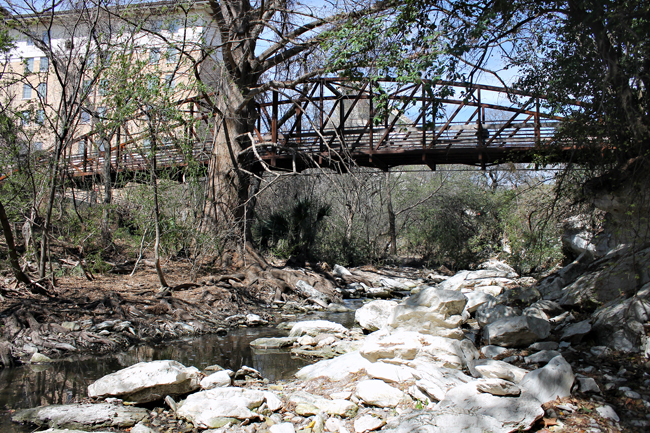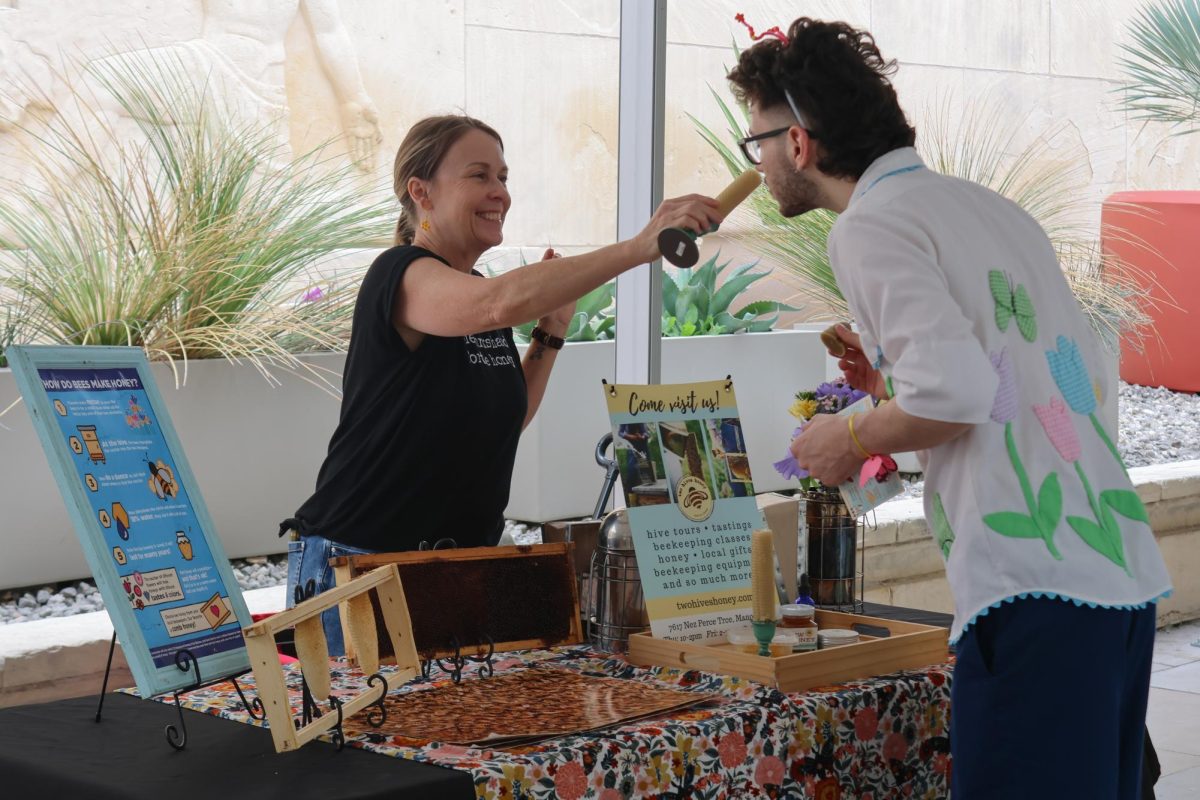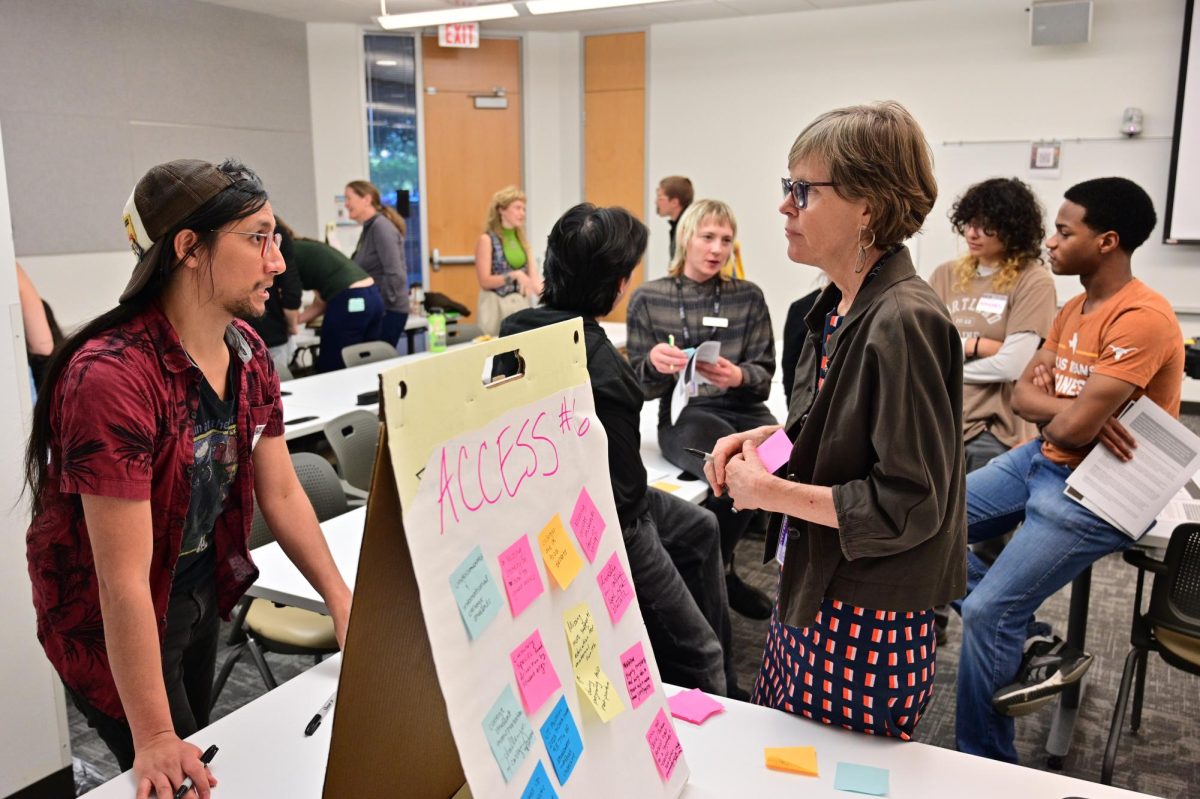Just as surveyor and Austin mayor Edwin Waller considered Waller Creek a beautiful resource in his original 1838 plan for the city, recent University and city master plans are beginning to feature the creek more prominently as an important ecological asset, resulting in drastic changes both on campus and in downtown Austin.
While Waller Creek has always figured prominently in UT’s history, only in recent decades did the University begin to embrace the creek’s ecological value. The University’s 2013 Campus Master Plan, which outlines goals for how campus will develop in the next 30 years, set in motion the construction of the Dell Medical School and launched a plan to make the creek a more centralized feature of campus. Meanwhile, construction projects downtown will redirect the southernmost part of the creek in order to increase area safety and foster economic growth.
Architecture professor Larry Speck, who helped develop the master plan, said the geographical and psychological center of the University has moved east over the past 25 years, as UT has constructed new buildings on the east side of campus.
Speck said the new center of campus may begin to shift away from the Student Activities Center and Liberal Arts Building and toward San Jacinto Boulevard, where Waller Creek runs and where the city may develop a rail line. The University is also working with the city on plans to create a continuous hike-and-bike trail that connects Lady Bird Lake to the city and campus, perhaps as far north as Dean Keeton Street.
“The center of gravity is definitely moving east once again,” Speck said. “The light rail is supposed to go up San Jacinto, and so if you have students coming and going to the campus and getting off at San Jacinto and right there, there’s a beautiful creek, oasis, green space and a place to hang out and recreation there. Then that really becomes a kind of center to campus, say, 20 or 30 years from now.”
Speck said the University has not always viewed the creek as an asset or incorporated the creek into architectural designs. In the 1950s and 1960s, the University neglected the creek’s ecosystem, at times constructing buildings with loading docks directly on the creekside.
“If you go back and look at the master plan and how they were planning it, the car is freaking God,” Speck said. “I mean, it’s all about as many parking spaces as close to the buildings as possible. Honestly, it was nasty.”
The University has moved away from being the car-obsessed campus it was in the 1950s, Speck said.
“The whole east side over there was just full of parking lots, and that’s what people thought was important,” Speck said. “At a certain point people said, you know, ‘that doesn’t make much of a campus, there’s no sense of community here.’”
According to Speck, the Etter-Harbin Alumni Center, or the Texas Exes building, was one of the few buildings constructed during the 1960s that incorporated the creek into its design, displaying it in the window of the ballroom. Speck said the building demonstrated the creek’s potential as an ecological asset.
“You know, it’s just phenomenal just how quickly cultural attitudes change,” Speck said. “You could see [the creek] not as an edge but as a green space that is a positive, you know, pleasant place to be in the middle of campus.”
With the development of the 1996 Campus Master Plan, University administrators decided to improve mobility for pedestrians and bikers and orient buildings toward the creek, Speck said.
The Dell Medical School, which will accept its first class in 2016, will have all its buildings oriented toward the creek — and as a result, University efforts to improve the creek will target this area first.
“[When] you walk into the front door of the teaching hospital, you [will] look through a big, glassy lobby,” Speck said. “You will look right out into the creek, front and center.”
Speck said he thinks the University’s improvements to the creek may be done piece-by-piece, as new buildings are constructed and existing buildings are renovated.
“I think that human beings and ecosystems can be compatible if they’re designed properly,” Speck said. “It’s just dumbass stupid to leave it like a ditch.”
Farther south along the creek, city planners are constructing the Waller Creek Tunnel, which will reclaim 28 acres, or 11 percent, of the downtown floodplain in order to allow for area redevelopment. Mayor Pro Tem Sheryl Cole, who is leading the project, said she would often visit Waller Creek to reflect when she was a UT student and could not pass up the opportunity to spearhead the project.
“It’s just my passion,” Cole said. “I was captivated by it. I love being down there, and once I had it as a project, it is hard to resist thinking about it — what could be here, what could go there.”
Cole said the development will include adding housing and shops, will improve the water quality in Waller Creek and prevent future erosion. The project is scheduled to be completed in fall 2014 at a total cost of $146.5 million.
The Waller Creek Conservancy is responsible for surface-level improvements in the area. After hosting a design competition in 2011 and securing initial funding in a 2012 bond election, the conservancy began work on a park in early 2013. Executive Director Stephanie McDonald said as the conservancy implements the park design, securing additional funding from public and private sources will remain a challenge.
In addition to cleaning up the creek and adding amenities, McDonald said a major challenge is changing people’s perceptions of the creek so they realize investing in it is a worthwhile endeavor.
“I think that [for] most people, if they even know where it is, [the creek is] largely ignored, or they don’t see it as an asset,” McDonald said. “People see it as an area where only unsafe things happen.”
Cole said she thinks the Waller Creek Tunnel Project and subsequent projects, such as the conservancy’s, will improve connectivity between different parts of Austin.
“As the area is revitalized and you have more people, including housing and students and pedestrians, it’s not so isolated … the safety issues will just kind of melt away,” Cole said. “Activity brings more livelihood and less interest in criminal events.”
But the creek’s future could be impacted by future development of large offices and apartment complexes that may detract from the historic feel the area offers. Philip Fry, co-author of a book about Waller Creek, said he is concerned private area development will conflict with the conservancy’s design of the park.
“[The park areas are] tied together by the creek, of course, and you can travel from one to the other,” Fry said. “It’ll be different. It’ll try to incorporate the public space with the private commercial development.”
Fry, a longtime Austin resident, said he thinks preserving some of the old bars and buildings downtown is important.
“If you go down to Rainey Street right now, you will see some of the foundation work for fairly large condominiums and hotels,” Fry said. “As you go from Waterloo Park along down you’re gonna have open spaces and then sheer walls of buildings, open spaces, more canyons of tall condominiums, and some of those are already in the works.”





















